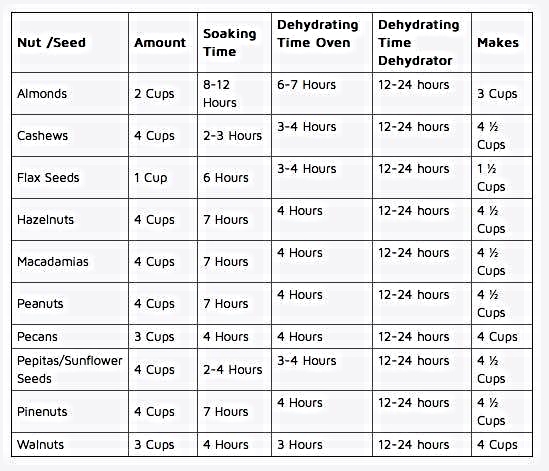HOW TO: Soak raw Nuts & Seeds and why is it SO important?
Are you a "Nut lover"?
If you are anything close to how I am - you can eat nuts anytime of the day. I am simply addicted to them! I use them when preparing my breakfast, I put them in salad and I even cook with them! This blog post is a prelude to the next recipe I'm posting, because you will need soaked nuts for making it.
Now off to the subject!
Here are some facts about nuts - they are packed with monounsaturated fats which are very good for you, they can improve your cholesterol levels and lower your risk of heart disease. It is well known the thermally processed nuts lose most of their health benefits so stick to the raw ones. But what no one tells us is how much of the antioxidants, minerals and fats of a raw nut is our body really capable of using.
The answer is - not much! And there's a simple explanation for it - seeds, nuts, grains and legumes contain enzyme inhibitors and anti-nutrient compounds that prevent germination of the seed until conditions are ready for the seed to grow into a plant (source www.cleanandleanrevolution.com).
When we consume nuts without proper preparation we can't access any of the nutrients these foods provide, exactly because of these inhibitors. But soaking and even sprouting them reduces and removes these compounds and we are able to fully enjoy the taste as well as the benefits of nuts, seeds and beans!
How do we know how long we need to soak them and are all of them the same? Well...no, they aren't! Nuts, seeds and legumes all have different soaking and sprouting time and here's a very nice chart, displaying the exact time frames needed for the different types:
Source cleanandleanrevolution.com
If you soak a small amount of nuts that you are planning to use in a short period of time it's not necessary to dry them. But if you soak a few cups and want to store them for several weeks you better consider drying them properly or they will develop mold in a couple of days. To dry nuts you can use a dehydrator and if you don't have one you can use your oven like I do!
Here are a couple of tables, containing soaking, sprouting and drying time frames, that you might find useful:
How to soak nuts properly?
First of all start with choosing a container big enough for the amount of nuts you are planning to soak and keep in mind that they expand after few hours. So bigger is better.
The first step is to wash them very well with warm water. Then place them in the bowl you chose and cover them with hot water. Mix inside 1/2 a teaspoon of Himalayan salt for each cup of nuts (1 tsp for walnuts and pecans) and cover the container with a thin, clean cloth, that will allow air to come in.
Use the tables to see how long you should soak each type of nut/seed and make sure you rinse them a couple of times (if possible) during the soaking. When rinsing, repeat the steps above - wash, pour hot water, put salt and cover with a cloth.
After you finish soaking, proceed to using your healthy, soaked nuts in your favorite recipes, or just as a snack. If you won't use them immediately it's better to dry them as explained above.
Another extremely healthy way to use soaked seeds and grains is to sprout them, in which case avoid putting salt when you soak them! I first heard of this practice from my naturopath in Bulgaria. I had some hormonal imbalances and he suggested including sprouts in my diet. They have been known for decades for adjusting hormones in the human body, plus they are delicious and look very pretty in a salad or as an addition to a side dish! And since sprouts are best used immediately after being cut, it's better if you grow them at home instead of buying them in your local grocery or health store.
It's fairly easy to do, you just need a sprouting jar (click the link to see how to make one if you can't buy it) and 2 minutes of your time once every day - to change their water and rinse them while soaking and to rinse them once a day when they start sprouting.
Easy, right? And the result is amazing - fresh homegrown sprouts you can use in your salads and for decorating your plates of beautiful, nutritious food!
NB! It is extremely important to check that the seeds you are going to use for sprouting are organic and haven't been treated with any chemicals, as this is a common practice for some seeds that are used for planting! After all we would like to get benefits for our bodies and instead we can end up indulging some sort of poison.
I hope this information was useful and stay tuned for the next blog post on HOW TO's in which I'll continue the subject on my "beloved" nuts with a topic on "How To Make Homemade NUT MILK"!
XOXO,
Gabi K.





